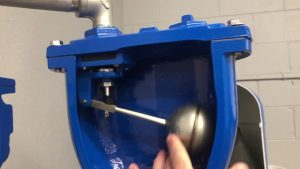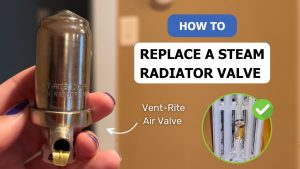About Cast Steel Gate Valves
Unlike forging, casting uses the liquid form of metal to create valves. These metals are melted into a molten liquid and poured into various molds. One of the biggest benefits of casting is that it can create valves with complex shapes, patterns, and sizes. Using a mold to manufacture these devices gives you more freedom to make different types of valves with more intricate parts.
OS&Y gate valves are specifically designed to industry standards for straight thru, a bi-directional flow which results in low flow loss and low-pressure drop. They are designed for applications where excellent flow conditions and tight shut-off are necessary. Our gate valves proudly service the oil/gas refining, pulp and paper, power generation, and chemical/petrochemical industries worldwide.
Cast Steel gate valves are used as efficient shut-off valves with flow in either direction for water, saturated steam, air, gas, and oil.
Cast Steel Gate Valves are designed and manufactured to ensure leakage of less than 100 ppm (parts per million) of volatile organic compounds. Extensive baseline laboratory testing (static and cycle testing) has been performed establishing critical design parameters necessary to achieve low emission sealing in the stem packing seal area and in the bonnet gasket sealing area, In-house testing procedure has been developed and is periodically performed to ensure that standard product design and manufacturing criteria consistently result in the Cast Steel Gate Valve meeting a maximum of 100 ppm VOC leakage prior to shipment.
Features of Cast Steel Gate Valves
Cast Steel Gate Valves are with main Features below:
- » SizeRanges: 1 1/2” through 48”
- » Pressure Ratings: ANSI #150 to 2500
- » Standards compliance: API 600, ASME B16.34 or equivalents
- » Materials: Cast Carbon Steel, Cast Stainless Steel, Cast Duplex, or Other Specials
- » Ends Connections: Flanged(FF, RF, RTJ) to international standards
- » OS&Y, Outside Stem and Yoke
- » Metal-sealed(API Trim # 1, #5, #8, #10 and etc.)
- » Optional Locking Device or Stem Extension
- » Optional Direct Mounting to ISO 5211
- » Full Port
Gate Valve Installation & Maintenance Instructions
Pre-Installation Checklist
There are a few things that one should do before even starting with the installation process of the gate valve. Gate valve installation instructions make everything run smoother and easier to complete. So what should we need to do? – Before installing the gate valve, make sure to know precisely what the valve is being used for. This will help to decide on the best installation method. Another thing one should do before installing the gate valve is to have a clean workspace. This will make sure not to make a mess while working! – Next, decide where the gate valve is going to be placed. This is an important decision as it can affect the rest of the installation. The placement of the valve will also affect how accessible it is for maintenance purposes.
Storage Conditions
It is recommended not to remove the valves from their packaging until they are ready to be installed. This will protect the seals and seats from foreign elements. This protects the valve from dirt and debris that could eventually lead to seat leakage. If in case, the valve is stored for a longer time, keep it in a cool, ventilated place.
Ⅰ. Installation and Use of Cast Steel Gate Valve
- (1) Before installing cast steel valves, it is necessary to check different parts such as the cavity and sealing surface to avoid dirt or sand particles attached.
- (2) The bolts of each connection part should be tightened evenly.
- (3) The packing parts should be pressed tightly to ensure the sealing of the packing and the flexible opening of the gate.
- (4) Before installing the cast steel valve, you have to check the valve model and connection size as well as pay attention to the flow direction of the medium to ensure consistency with the valve requirements.
- (5) When installing the valve, you have to reserve the necessary space for the valve drive.
- (6) The wiring of the drive device should be carried out according to the circuit diagram.
- (7) The cast steel gate valve should be maintained regularly. It should not be collided and squeezed to protect the sealing effect.
Ⅱ. Notes for installation of Cast Steel Gate Valve
- (1) The installation position, height, import, and export direction should meet the design requirements, and the connection should be firm and tight.
- (2) The handle of all types of manual valves installed on the insulation pipe should not be downward.
- (3) The visual inspection must be carried out before installing the valve. The valve should meet the requirements of the current national standard “General Valve Mark” GB 12220. For the valve whose working pressure is greater than 1.0 MPa and plays a cutting role on the main pipe, the strength and tight performance test should be carried out before installation, and it can be used only after qualification. During the strength test, the test pressure is 1.5 times the nominal pressure, and the duration is not less than 5 minutes. The valve shell and packing should be qualified without leakage. During the tightness test, the test pressure is 1.1 times the nominal pressure, and the test pressure should meet the requirements of the GB 50243 standard for the duration of the test. The sealing surface of the valve disc is qualified if there is no leakage.
Notes:
- (1) The handwheel, handle and transmission mechanism are not allowed to be used for lifting. Also, collision is strictly prohibited.
- (2) The double disc gate valve should be installed vertically (the valve stem is in the vertical position and the handwheel is on the top).
- (3) The bypass valve of the gate valve should be opened first (to balance the pressure difference between the inlet and outlet and reduce the opening force).
- (4) The gate valve with a transmission mechanism should be installed according to the provisions of the product instruction manual.
- (5) You should lubricate cast steel valves once a month if they are frequently used.
Operation of Cast Steel Gate Valve
- Do not use the valve at pressures above its working pressure.
- If the valve is jammed in a position between open and closed check the valve face and seat. Remove and check for foreign objects (see maintenance).
- Excessive torque from actuators can damage internal valve parts.
Maintenance of Cast Steel Gate Valve
- Cycle the valve at least once a month if not used regularly.
- Relieve the system pressure before performing any maintenance.
- To remove from pipework reverse the installation sequence (above).
- Replace the valve gate by removing the top body (bonnet) and stem. Screw out the gate and replace it with the new part. Install the top of the body and refit into line.
- See the video link under each gate valve model for further instructions.
ZECO VALVE GROUP CO., LTD. has developed its laboratory for R&D for international standard valve design innovation and validation, including PT, MTUT, and FE testing. ZECO is a modest and united team with more diligence and enterprising to show integrity to customers. If you have any need, welcome to consult us.












